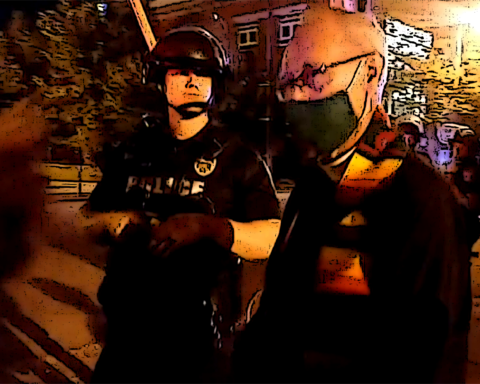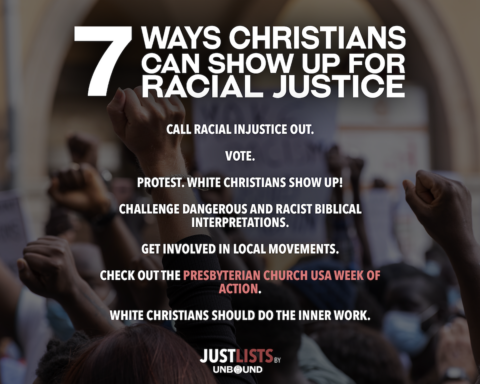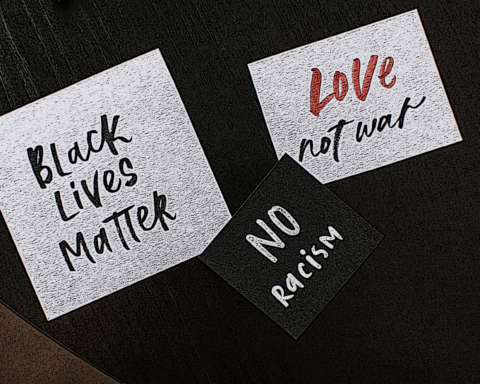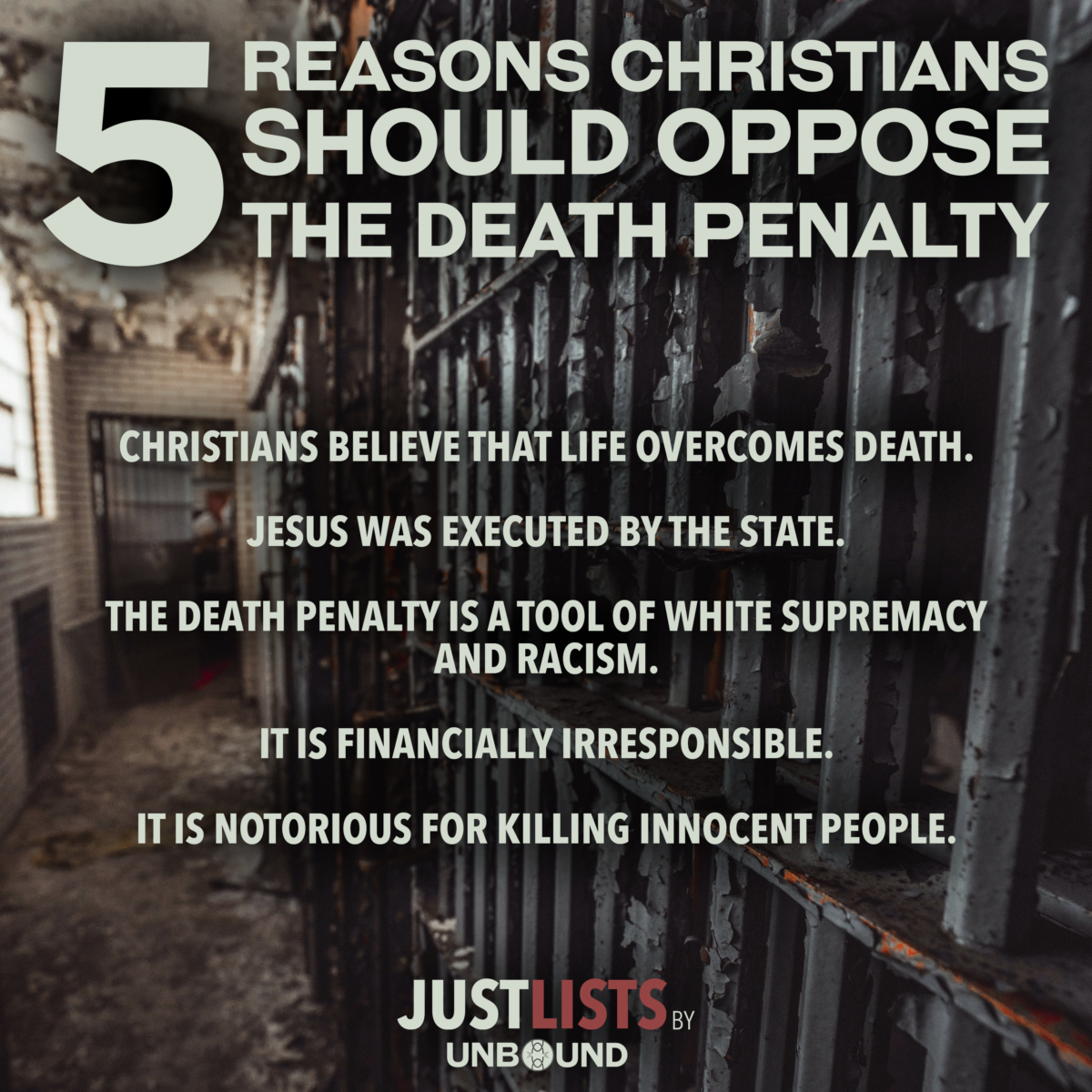Let’s start with an association game. I want you to think about the largest church or largest church congregation you’ve ever seen. What denomination is it? I’m sure that there are several different answers to this question depending on who you are and where you live. Here in the Southern United States, where I live, most people will likely think of the Southern Baptists. The Southern Baptist Convention (SBC) is one of the largest denominations in the U.S. with a membership body of over 47.5 thousand congregations and over 14.5 million members. The Presbyterian Church in the USA [PC(USA)], by comparison, has just over 1.3 million members. In other words, the SBC is over eleven times the size of the PC(USA). To put that into a visual perspective, a fully-grown whale shark is approximately eleven times the size of an adult human male. Comparing churches to sharks is not actually relevant to this article, or anything for that matter, but I still thought it was interesting.
Over the next two articles I examine how denominational size and influence impact the church’s ability to promote positive change in movements for justice and equity. I achieve this by comparing how Presbyterian and Southern Baptist denominations responded to the American Civil Rights Movement. Because the push for Civil Rights was a major movement that inspired several initiatives and law changes over a roughly twenty-year period, these articles will focus specifically on Southern Baptist and Presbyterian responses to the 1954 federal court ruling on Brown v Board of Education. This piece will look at the Southern Baptist response.
The Southern Baptist Convention is an example of what is known as a majority church. What this means is the SBC carries a high level of legitimacy due to its larger size and more connected status (Kmec, et al, 2017, p.9). What is interesting about majority churches, like the SBC, is that while they are well connected to powerful elites and hold incredible influential potential, they are rarely seen, on the whole, at the forefront of progressive justice movements.
One common explanation I have heard to justify this compares denominations to wheels. They suggest that, like a giant wheel, it takes a lot of energy and time to make larger denominations move. Smaller wheels (denominations), on the other hand, require less pressure or time to begin moving. However, if this statement is true, it is important to understand why larger denominations experience such heavy resistance to move or change, especially in the face of major historical moments that progress justice and equity like Brown v Board of Education.
Leading up to the federal court’s unanimous ruling that racial segregation of children in public schools is unconstitutional, the SBC rarely discussed the politics of racial disparity from behind the pulpit or in their writing. This is because, common thought within the SBC, including from prominent Baptist theologians like Douglas Hudgins, was that their “Baptist faith had nothing to do with civil rights in the political sense” (Kidd, et al, 2015, p.221). They were more likely to focus on other issues – like evangelism, and combating communism and liberal theology. In fact, in their book, Divided by Faith, Emmerson and Smith reviewed Billy Graham’s evangelical magazine, Christianity Today, and discovered that between 1957 and 1965 the periodical averaged less than two articles per year that focused on race issues (Smith, et al, 2000, p.47).
However, following Brown v Board of Education, the SBC moved quickly to respond with an official resolution. The 1954 SBC meeting adopted a statement supporting the court’s ruling. In Baptists in America, Kidd and Hankins (2015, p.226) note that the SBC statement “acknowledged, that Brown was consistent with both ‘the Constitutional guarantee of equal freedom to all citizens’ and ‘the Christian principles of equal justice and love for all men.’” This statement, while contentious, passed at the SBC meeting by a 100 to 1 margin (Dupont, 2013, p.66).
On the surface, this resolution may seem like a major step forward in the call for justice and equity. However, words without action make great excuses. In this case, while the SBC’s official stance supported the Civil Rights Movement, there were no actions at the institutional level to enforce this resolution. This meant that many congregations and members actively ignored the resolution or even rebelled against it.
There are several explanations for the SBC’s failure to unify in the fight for Civil Rights. First, is due to the autonomous nature of churches within the SBC. Two of the main tenets of the SBC is religious individualism and local church autonomy. This means that “No outward authority can stand between the individual and God – no church hierarchy, bishop, priest, creed, or even congregation” (Kidd, et al, 2015, p.222). This ideology was supported by church leaders such as the former editor of the Baptist Record, Dr. Arthur Leon Goodrich, who informed his readers, “our readers need not fear any results from this action. No Convention can bind any Baptist church. Each church is a rule unto itself” (Dupont, 2013, p.66).
Another explanation is that, with the Southern Baptist’s far reaching connections as a majority church, they became tied by the values and beliefs that defined their church. This meant that northern churches who may have been willing to entertain more progressive efforts to end segregation were bound by their ties with the more conservative southern congregations who were anti-integration. Southern Baptist Churches may be autonomous, but peer pressure is real, y’all.
It also meant that their ties to political leaders and government officials through the church setting limited them from taking risks and alienating themselves from the privileges associated with those places of power. This is especially true in contexts where religion has been part of the conflict. Michael Emerson and Christian Smith describe the majority church’s ties to systematic privilege by saying, “Evangelicals usually fail to challenge the system not just out of concern for evangelism, but also because they support the American system and enjoy its fruits” (Emmerson, et al, 2000, p.21,22). Expounding on this idea they continue, “So, despite having the sub-cultural tools to call for radical changes in race relations, they most consistently call for changes in persons that leave the dominant social structures, institutions, and culture intact” (Emmerson, et al, 2000, p.21). This gives them the illusion of calling for change when in reality changing the leadership doesn’t necessarily change the system in which they are benefiting.
In other words, the best the SBC could do, at the institutional level, even with all of its power and influence, was pay lip service to the Civil Rights Movement, including Brown v Board of Education. This was further evidenced, when forty years later, the SBC acknowledged its failure and apologized for the hollowness of its resolution supporting the federal court’s ruling (SBC.net, 1995).
Recently, the President of the SBC, J.D. Greear, called for SBC members to stand together and say that “Black Lives Matter”. He exclaimed, “Southern Baptists, we need to say it clearly as a gospel issue: Black lives matter… Of course black lives matter. Our black brothers and sisters are made in the image of God. Black lives matter because Jesus died for them” (Parke, 2020). Of course, Greear followed that up by saying that SBC leadership doesn’t represent the diversity of its membership. This allowed him to make a bold statement while reserving the ability to claim the excuses declared by his predecessors during the American Civil Rights Movement; those of the autonomy of churches and religious individuality. It remains to be seen if the SBC will take any further steps to promote peace, justice, and equity in this current time of civil unrest.
It is important to note, here, that this is not an attack on the Southern Baptist Convention. I am using their historical positions as examples of how larger church denominations are constrained by the power and influence they wield. Much in the same way a warrior holding a broadsword would be limited fighting in a small room, there is no denying the power that large denominations like the SBC wield, but the space available for movement is limited. In a setting such as a majority church like the SBC, progressive achievements are more likely to come from the actions of rogue individuals rather than a collective push. There were certainly examples of this within the SBC, and other majority denominations, who participated in and enhanced progressive efforts throughout the Civil Rights Movement. These individuals are known as religious mavericks and will be the focus of a future article.
Next month’s article will examine ways in which smaller, less connected churches, like the Presbyterian denominations of the 1950s and 1960s, were more suited than larger denominations to influence socio-political decisions at a major level. I will argue that minority churches often have greater dexterity to change course when they are wrong, and are more efficient in their ability to push for progressive change.
Thank you for reading this edition of Justice is a Verb, but remember, reading is only the beginning. We are called to “Do Justice”, so what will you do?
Works Cited
Dupont, C.R., 2013. Mississippi praying: southern white evangelicals and the civil rights movement, 1945-1975. New York: New York University Press.
Emerson, M.O. and Smith, C., 2000. Divided by faith: evangelical religion and the problem of race in America. Oxford: Oxford University Press.
Kidd, T. and Hankins, B., 2015. Baptists In America: A History. New York: Oxford University Press.
Kmec, V. and Ganiel, G., 2017. The Strengths and Limitations of the Inclusion of Religious Actors in Peace Processes in Northern Ireland and Bosnia and Herzegovina. International Negotiation, 24(2), pp.1–28.
Parke, C., 2020. Southern Baptist President Calls For Members To Declare: ‘Black Lives Matter’. [online] Fox News. Available at: <https://www.foxnews.com/us/black-lives-matter-southern-baptist> [Accessed 22 July 2020].
Sbc.net. 1995. Southern Baptist Convention > Resolution On Racial Reconciliation On The 150Th Anniversary Of The Southern Baptist Convention. [online] Available at: <http://www.sbc.net/resolutions/899/resolution-on-racial-reconciliation-on-the-150th-anniversary-of-the-southern-baptist-convention> [Accessed 24 July 2020].

David Mills is a graduate of the Senator George J. Mitchell Institute for Global Peace, Security and Justice at Queen’s University Belfast with a MA in Conflict Transformation and Social Justice. David previously served as a Global Scholar for Rotary International and is a 2020 Ambassador for the Institute for Economics and Peace. His previous research focuses on identity and the impact of anti-immigration rhetoric on the lives and well-being of the Latinx community legally living in the United States.






Unbound Social